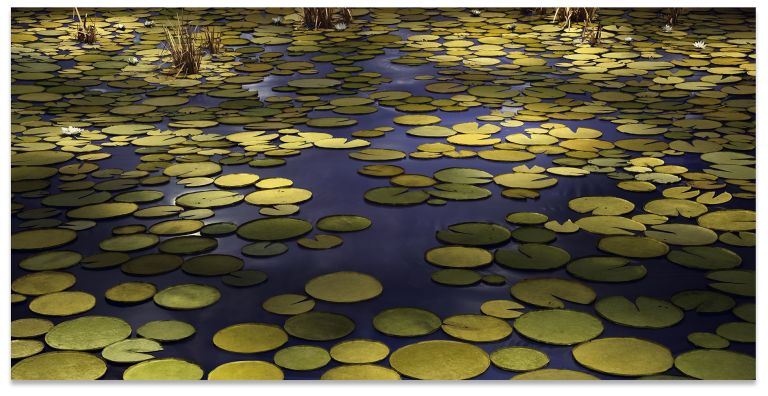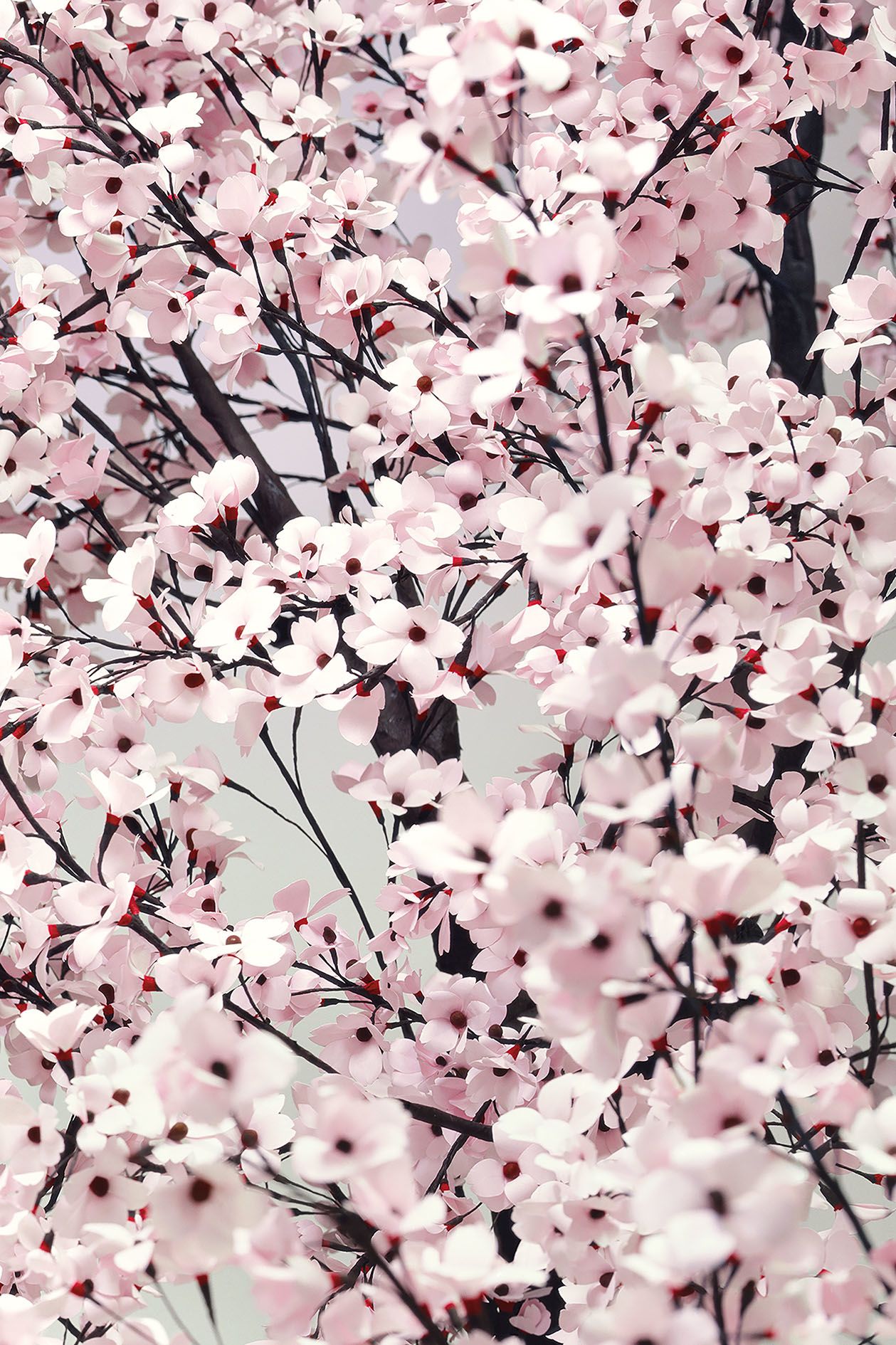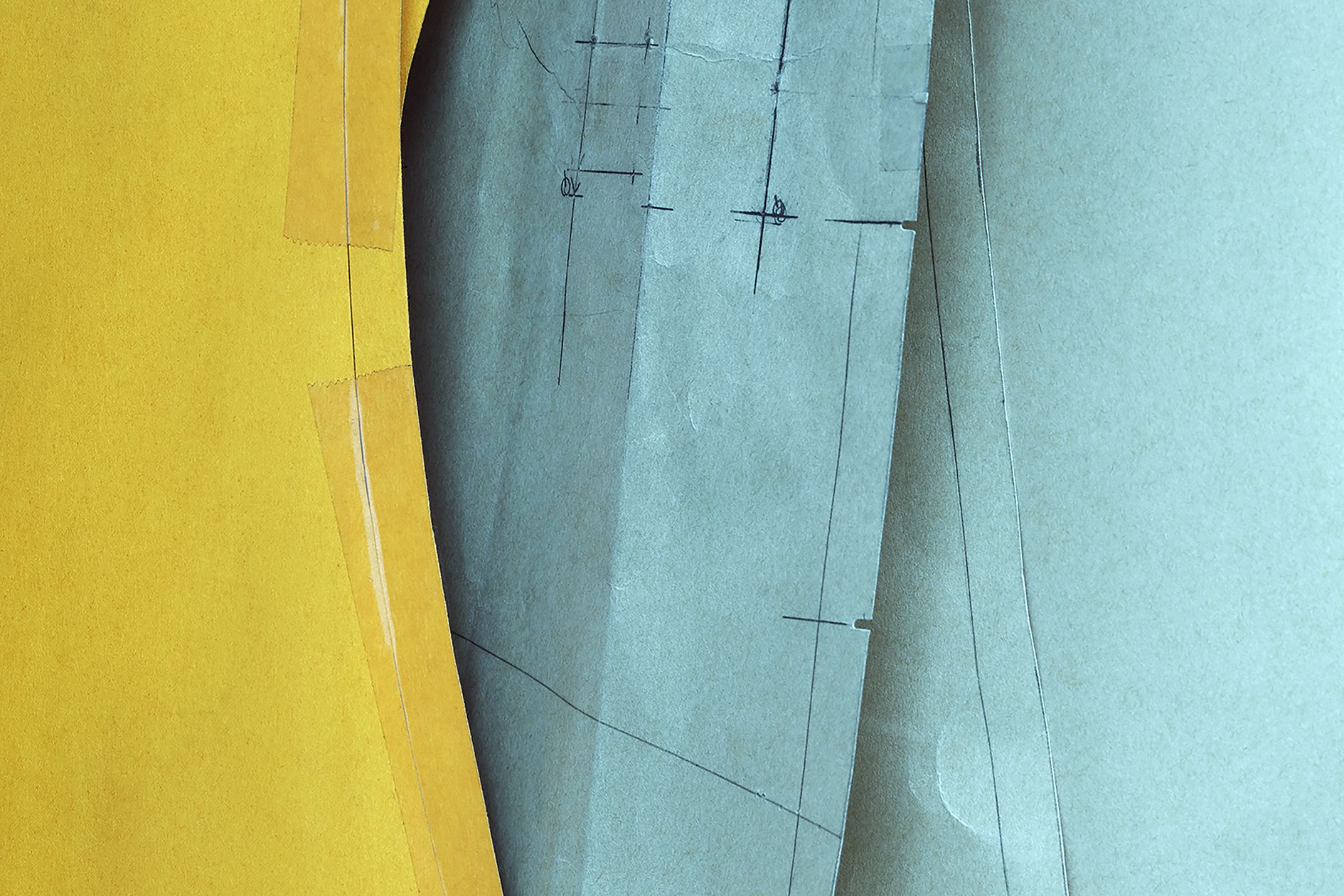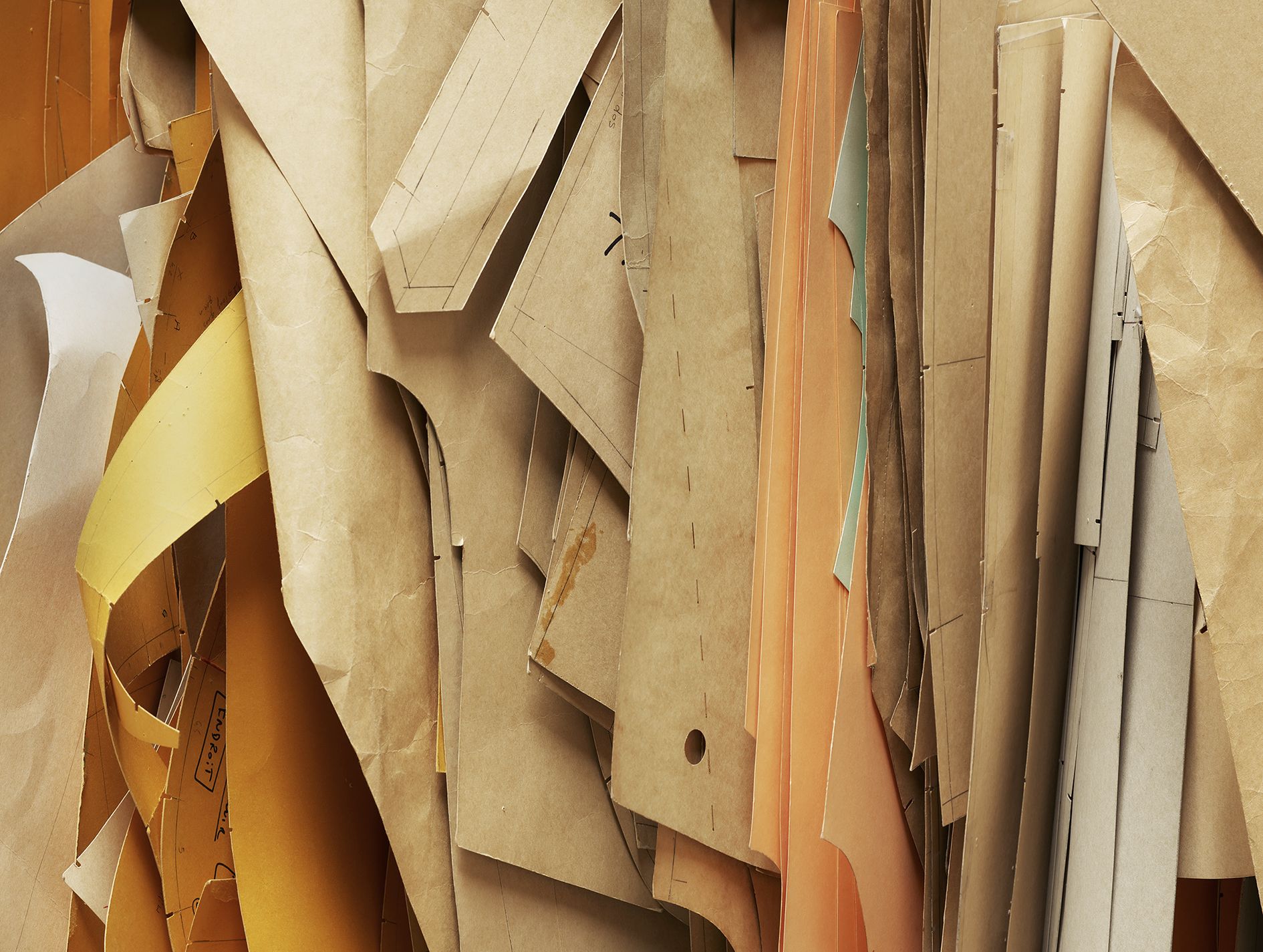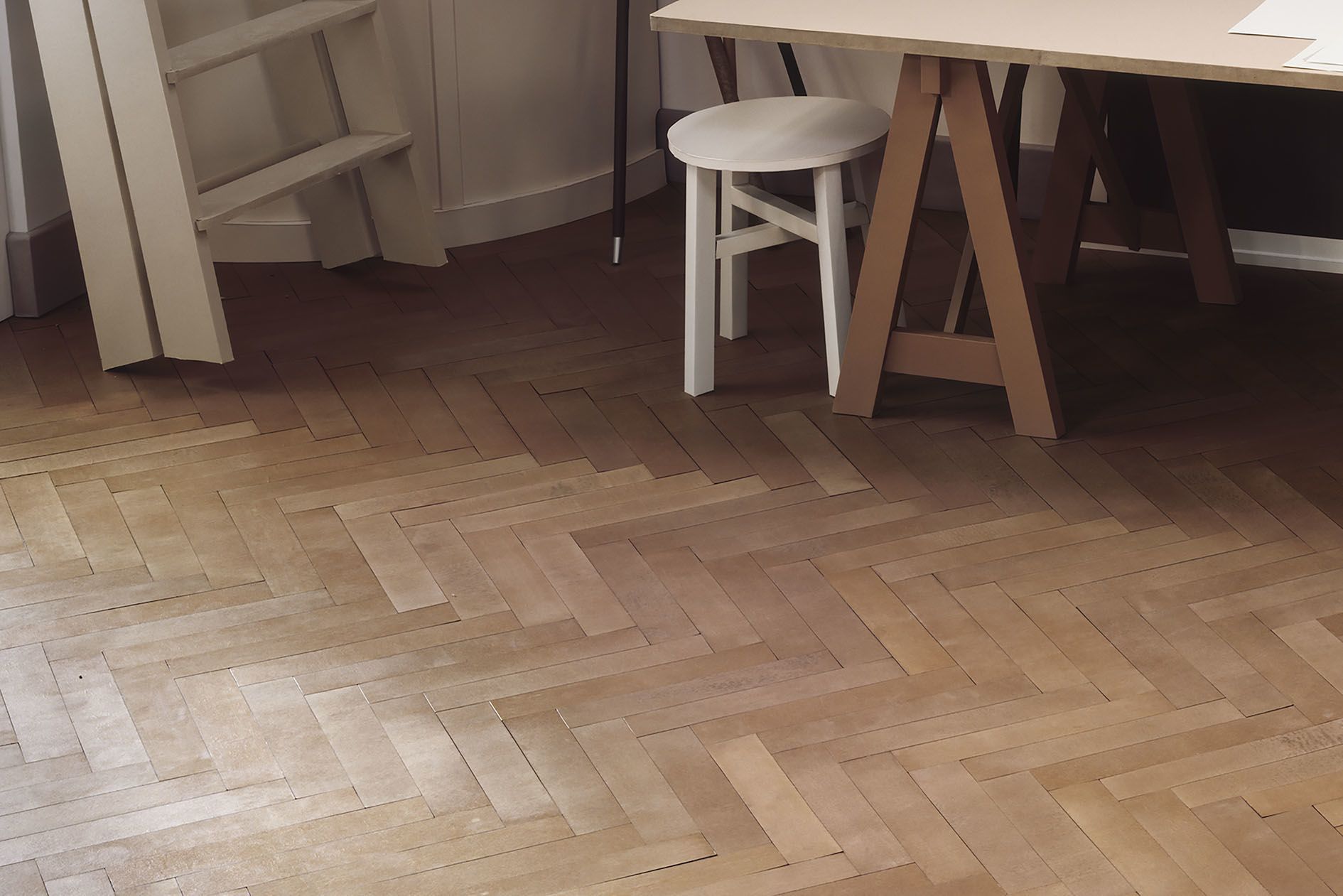The rigidity of the multi-colored thick card patterns is in contrast to the seemingly haphazard means of presentation and operations of the atelier. Demand sees a similarity with the fragmented patterns to Matisse’s paper cut-outs, abandoned leftovers on the studio floor that could become part of a work, presented in Atelier (2014).
Unlike the architectural models of his earlier Model Studies, which may be used to trigger a seemingly endless chain of thought, Alaïa’s patterns are designed for use and reuse as a manual for the repetition of an idea in fabric. Whether used in the process of architects or fashion designers, the working model has an inbuilt history and biography. Demand continues to investigate how our interpretation of new and existing models preclude the structures we inhabit, and in his pursuit of technical exactitude and sculptural form, he studies the model as a way of rebuilding an impression of the world.
